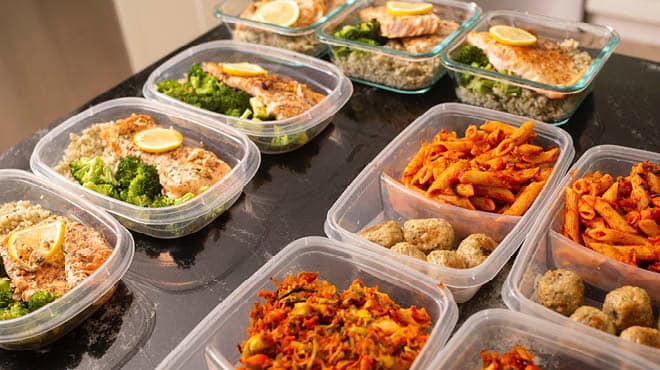Recent Posts
-

-
 Patient StoriesA lifesaver saved: An EMS veteran’s journey from rescue to recoveryNovember 14, 2025
Patient StoriesA lifesaver saved: An EMS veteran’s journey from rescue to recoveryNovember 14, 2025 -

Calcium intake and absorption: Are you getting enough?

Calcium is the most abundant mineral in the body. About 1% of the body's calcium is used for metabolic functions, such as vascular contraction and dilation, muscle function, blood clotting, heart rhythm, nerve transmission, intracellular signaling and hormone secretion. The remaining 99% is found in structural support for your bones and teeth. When calcium blood levels are low, a hormone signals that calcium be released from bones into the bloodstream.
Recommended calcium intake
Many people don't get enough calcium. But how much do you need?
The National Institutes of Health (NIH) provides this guidance for daily intake in milligrams (mg):
- Younger than 6 months: 200 mg
- 6–12 months: 260 mg
- 1–3 years: 700 mg
- 4–8 years: 1,000 mg
- 9–18 years: 1,300 mg
- 19–50 years: 1,000 mg
- 51–70 years: 1,000 mg for men, 1,200 mg for women
- 71 years and older: 1,200 mg
Inadequate calcium consumption causes osteopenia, or bone loss, which may result in osteoporosis, which is weak, brittle bones. In addition, you're more susceptible to bone fractures with poor calcium intake. Signs of inadequate calcium may include muscle cramping and weakness, tingling or numbness in your fingers, abnormal heart rate or poor appetite.
Calcium absorption
Calcium is a large mineral that can take time to break down and be absorbed into your body. The recommended intake of calcium at one time is 500 mg or less.
Calcium-rich foods include:
- Plain, low-fat yogurt: 415 mg per 8 ounces
- Cheddar cheese: 307 mg per 1.5 ounces
- Nonfat milk: 299 mg per 8 ounces
- Fortified orange juice: 300 mg per 8 ounces
- Salmon: 181 mg per 3 ounces
- Kale: 100 mg per 1 cup
- Raw broccoli: 21 mg per 1/2 cup
Calcium absorption depends on the total amount of calcium consumed at one time; the higher the amount, the less absorption. However, the presence of vitamin D increases calcium absorption.
So the next time you're shopping for high-calcium foods, search for low-fat yogurt, low-fat milk, cheddar cheese, fortified orange juice, leafy greens and other calcium-containing foods. If you're looking for a calcium supplement, remember the importance of 500 mg or less per serving for best absorption.
Try this calcium-rich recipe. Pair it with a side dish of kale salad or broccoli for an extra boost of calcium.
Citrus seared salmon
By Mayo Clinic
Serves 4
4 4-ounce salmon fillets, trimmed
1 teaspoon cumin
1 teaspoon orange zest
1/4 teaspoon kosher salt
1/4 cup orange juice
1/4 cup apple juice
1 tablespoon Dijon mustard
2 teaspoons honey
1 teaspoon ground black pepper
1 tablespoon olive oil
1 tablespoon water
1 teaspoon cornstarch
Place the salmon fillets skin side down on a plate and season with cumin, orange zest and salt. In a medium bowl, combine the orange juice, apple juice, mustard, honey and black pepper. In a small bowl, combine the water and cornstarch to make a slurry.
Heat a nonstick sauté pan over medium-high heat. Add the olive oil to the heated sauté pan. Place the salmon in the pan with the seasoned side down. Cook for approximately 2 minutes. Flip and cook for another 2 minutes until the internal temperature is 145 F.
Remove the salmon from the pan, cover and set aside. Add the juice mixture to the sauté pan. Slowly whisk the slurry into the juice mixture, continuing to whisk until the desired thickness is reached. Drizzle the sauce over the salmon and serve.
Nutritional per 4-ounce serving: 160 calories, 16 grams total fat, 282 milligrams sodium, 8 grams total carbohydrate, 6 grams total sugars, 0 grams fiber, 22 grams protein.
Anne Harguth is a registered dietitian in Clinical Nutrition Services in Waseca, Minnesota.


